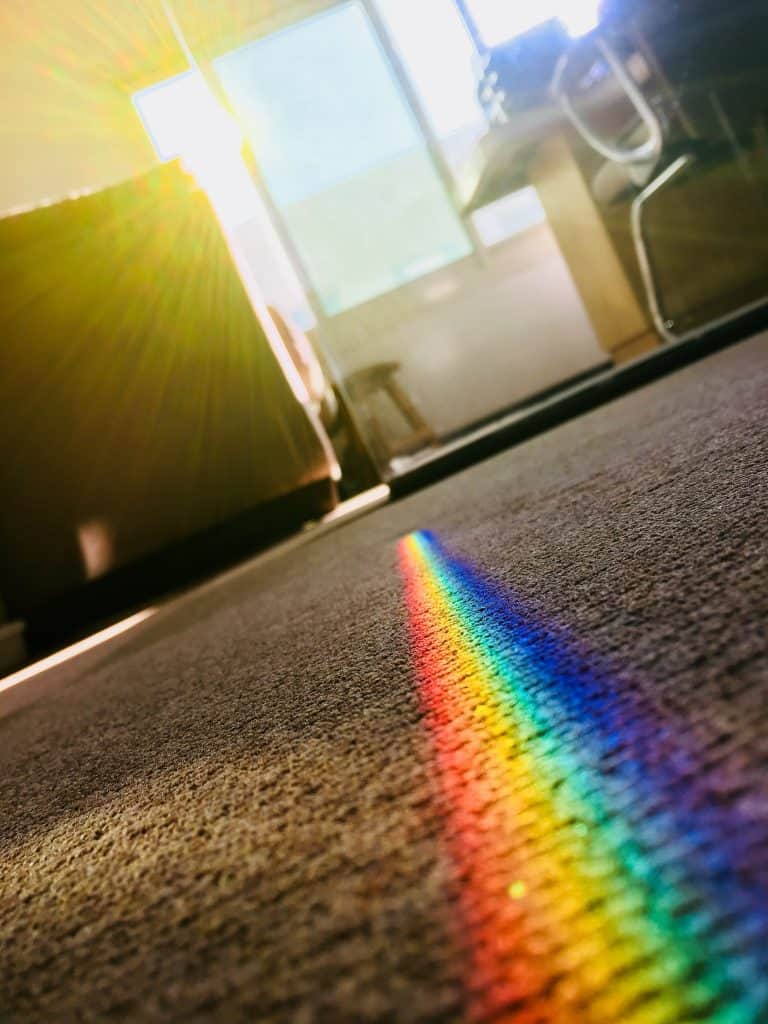Typically, a carpet may stretch an additional 1-2% of its original dimensions. For a carpet that is 100 by 100 inches, this means an additional 1 or 2 inches on either side.
People stretch carpets to prevent them from loosening through their lifespans.
Stretching also causes the carpet to assume its original form.
This clears any form of ripples or buldges within it, which would otherwise make it unstable both for walking on and placing furniture. It is advisable to stretch a carpet at least once in its lifespan.

Can You Stretch A Carpet By Yourself?
It is possible to stretch a carpet by yourself, provided you have a power stretcher and know how to use it correctly.
Otherwise, you may need additional pair(s) of hands. Stretching a carpet using a power stretcher will take you between 1-2 hours to get the job done, depending on how much furniture needs to be moved.
However, it is not recommendable to stretch a carpet all by yourself. This is because, for one, you may end up damaging your carpet if you are an amateur.
Secondly, you may not be able to stretch it to standard with the equipment you own. Therefore, it is always better to consult a professional.
Check out this YouTube video that shows how to stretch carpet.
Why Should You Stretch your Carpet?
One of the primary reasons for stretching your carpet would be to extend its lifespan. Moreover, a stretched carpet increases home safety by reducing tripping due to carpet ridges and bulges.
Furthermore, this saves money in the long term as it eliminates the need to replace the carpet altogether. A typical modern carpet lasts between 5-15 years. A stretched one will last even longer.
Aesthetically, stretching improves the look and feel of your carpet and, more generally, your home. Over time, walking and sliding equipment over the carpet causes wear and tear.
The carpet becomes loose and lifts off the floor into lumps, which gives it an unpleasant appearance and makes it harder to arrange furniture in an attractive manner.
How To Stretch A Carpet
To stretch a carpet, you would require a few special tools, which, luckily, can be rented from a local hardware store. These include a power stretcher, work gloves, pliers, yardstick, pry bar, knee-kicker, carpet knife, and a flat-head screwdriver.
There are a few steps to follow to ensure you get the job well done, as discussed below:
Remove all furniture and clean the carpet: The furniture is not cleared to remove weight but rather to create space for one to do the work. It is quite possible to stretch a carpet underneath furniture provided that at least 50% of the space is vacant.
Normally, shampoo is used to clean the carpet. This should be done at least 24 hours before the actual stretching is done to allow for the carpet to dry out completely. Moisture in the carpet would loosen its fabric and make stretching more tasking.
Free the tack strips at the corner of the carpet: Do this gently using a pair of pliers to avoid damaging the pile fibers. Also, free the tack strips on only three sides of the room, leaving the carpet anchored on one side, which will serve as the pivot during the actual stretching.
Free the carpet padding: The padding underneath the carpet is usually secured by staples. Carefully remove these using the flat-head screwdriver and pliers. Removing the staples will allow you to raise the carpet from the walls’ edges, creating space for you to remove the old tack strips and replace them with new ones.
These strips are removed using the flat-head screwdriver and a hammer. The screwdriver is placed as a wedge under the tack strips and used to pry them using the hammer claws. Make sure to wear work gloves while doing this, as tack strips are made of very sharp tacks and settling nails.
Stretch the carpet: This is the most important part of the process. You will require a power stretcher, knee-kicker, and carpet cutter for this step.
The power stretcher has sharp prongs on one end with which it holds the carpet in place. On the opposite end is a brace that pushes against the wall on the other side, allowing you to stretch the carpet over a large area.
A knee kicker is used to stretch smaller areas of the carpet, where a power stretcher cannot be used.
Reposition the carpet: Place the carpet back over the padding, using the power stretcher to pull it into place. Watch out that the carpet wrinkles are smoothened; pressing the lever on the stretcher until an optimum stretch is achieved. After stretching, you’ll require a carpet cutter to cut the excess fabric off so that it fits into the room.
Secure the carpet: If there are doorways, you’ll need transition molding to hold the carpet. Secure the carpet by nailing the transition molding over it in doorways. This helps maintain high traction within the carpet.
Can You Over-Stretch A Carpet?
It is possible to overstretch a carpet if you are not careful enough. In such a case, the carpet thresholds may get ripped.
The rip can be big enough to tear into the carpet edges for as much as 2-3 inches.
Fortunately, it is quite possible to correct this error before the damage occurs by re-stretching the carpet. However, a carpet shouldn’t be re-stretched more than once to avoid destroying it.
How Much Does It Cost to Stretch a Carpet?
The standard cost would be around $0.3 per square foot. If there is a lot of furniture that needs to be moved first, the cost may rise to about $0.5 per square foot. Therefore, the total amount would depend on the size of the room and how many rooms there are in total.
The cost also depends on how old the carpet is. The older it is, the more fragile it becomes, making stretching more difficult and, therefore, the cost goes higher.
If the carpet is too old, stretching may not be a viable option, and in such a case, carpet replacement would be the best option.
In Conclusion
A carpet normally stretches by 1-2% of its original dimensions. People normally stretch carpets not only for them to be more aesthetically pleasing but also for longevity and safety concerns. A typical carpet should last between 5-15 years.
Carpet stretching may be quite cheap or expensive depending on the size and quality of your carpet; the bigger the carpet, the more expensive it is to stretch it.
In some cases, when the carpet quality has deteriorated, it is wiser and more cost-effective to replace it.





